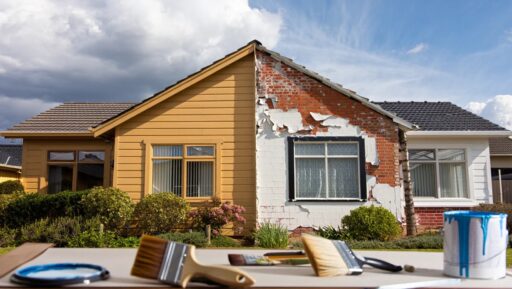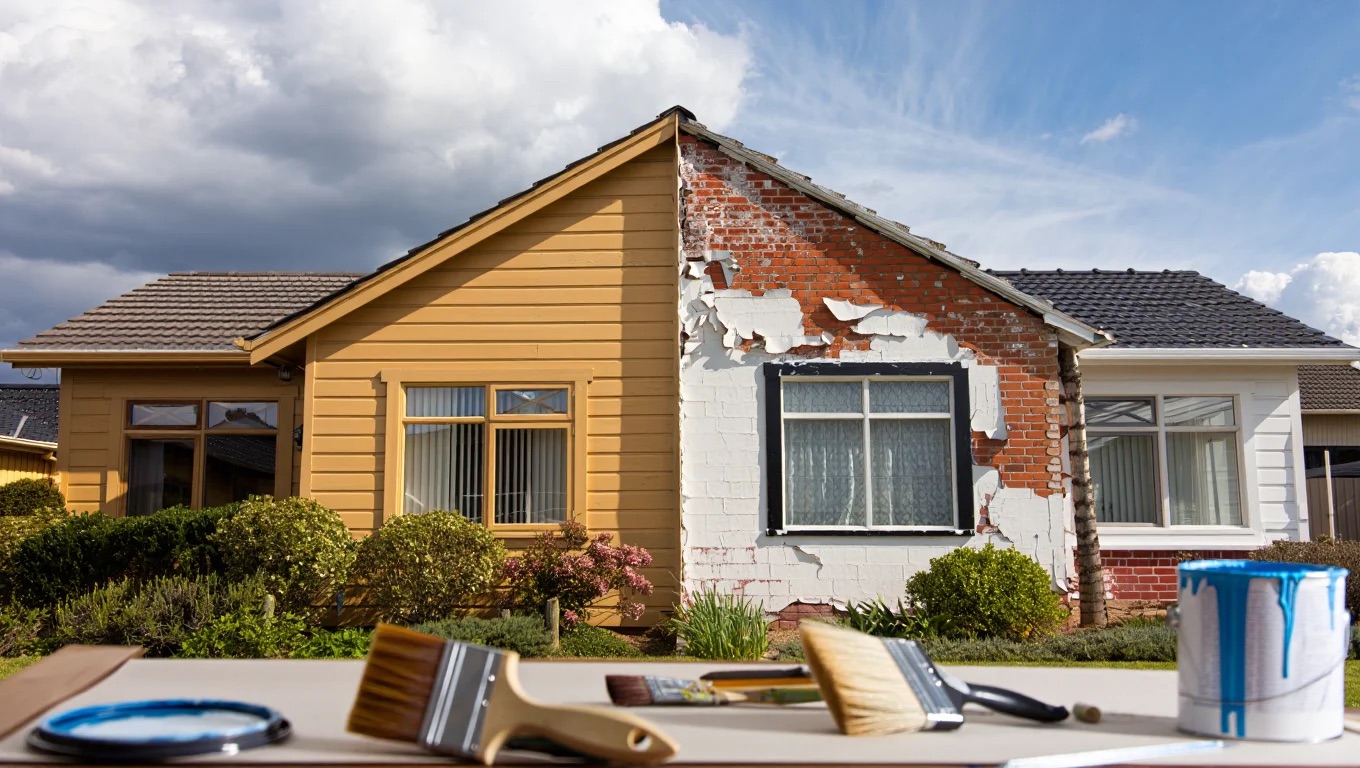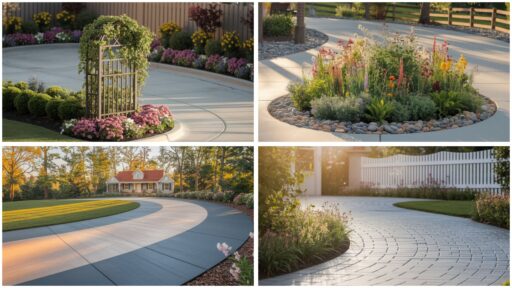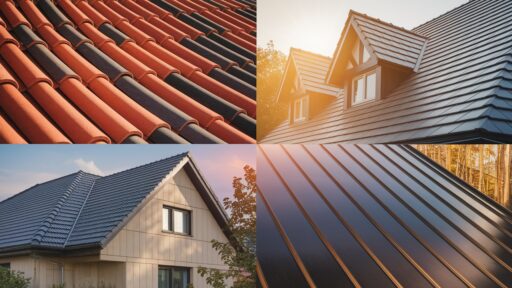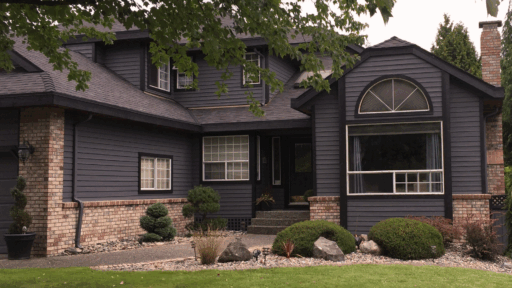Paint is just paint. Right?
It sounds like a simple question, but the answer is more difficult than you might think.
Many homeowners wonder if they can use any paint for outside purposes.
But using the wrong paint type can lead to costly mistakes and damage to your home’s surfaces.
Interior and exterior paints serve different purposes.
They have unique formulations designed for conspecific conditions.
Interior paint works well inside homes but fails when exposed to outdoor elements.
Outdoor paint contains special ingredients that protect against weather, UV rays, and temperature changes.
This guide explains how interior and exterior paints differ.
You’ll learn where to use each type safely.
We’ll also provide helpful advice if you accidentally use the wrong paint color or type on your surfaces.
Why Are Interior and Exterior Paint Different?
The key differences between interior and exterior paints lie in their chemical makeup and intended use.
| Aspect | Interior Paint | Exterior Paint |
|---|---|---|
| Weather Resistance | Not designed for weather exposure | Built to withstand rain, snow, and extreme temperatures |
| UV Protection | Minimal UV blockers | Contains strong UV inhibitors to prevent fading |
| Durability | Focuses on washability and stain resistance | Engineered for long-term outdoor exposure |
| Chemical Composition | Lower VOCs, gentle formulation | Stronger resins and additives for protection |
| Mildew Resistance | Basic mildew protection | Advanced anti-fungal and anti-bacterial properties |
| Flexibility | Less flexible, designed for stable indoor conditions | More flexible to handle expansion and contraction |
These differences explain why each paint type performs best in its intended environment.
Why Should You Not Use Interior Paint Outside?

Interior paint lacks the protective qualities needed for outdoor survival.
- Poor Weather Protection: Interior paint cannot handle rain, snow, or humidity. It will break down quickly when exposed to moisture.
- UV Damage: Sunlight destroys interior paint rapidly. The colors fade fast, and the paint film becomes brittle.
- Temperature Problems: Interior paint cracks when temperatures change. Hot and cold weather causes it to expand and contract poorly.
- Weak Adhesion: Interior paint doesn’t stick well to outdoor surfaces. It peels and flakes off much faster than exterior paint.
- Color Loss: Interior paint loses its color quickly outside. Bright colors become dull and faded within months.
- Surface Damage: Using the wrong paint can damage the surface underneath. This creates bigger repair problems later.
These issues make interior paint unsuitable for any outdoor application.
Consequences of Using an Interior Paint Outside

Using interior paint outdoors creates several serious problems that cost time and money.
- Paint Flaking: Interior paint peels off in large chunks. This happens within weeks or months of application.
- Mildew Growth: Moisture trapped under interior paint creates perfect conditions for mildew. Black spots and fuzzy growth appear quickly.
- Surface Damage: Failed paint can damage wood, metal, or concrete underneath. This leads to rot, rust, or structural problems.
- Frequent Repainting: Interior paint fails so quickly that you’ll need to repaint every year. This becomes very expensive over time.
- Staining: Failed interior paint can stain surfaces permanently. Removing these stains often requires professional help.
- Reduced Property Value: Peeling and damaged paint make your home look neglected. This hurts your property’s market value.
These consequences make the initial paint savings disappear quickly through repair costs.
Cost Comparison: Interior vs. Exterior Paint Over Time

Interior paint typically costs $25-40 per gallon, while exterior paint ranges from $40-70 per gallon.
This upfront difference makes interior paint appear cheaper for outdoor projects.
But if you use interior paint outside, it creates hidden costs that multiply quickly.
You’ll need to repaint every 1-2 years instead of every 5-7 years with proper exterior paint.
Let’s consider a typical 1,500 square foot exterior painting job.
If you use interior paint, you’ll initially save $200-300 but later, you’ll be costing $2,000-3,000, or more over the next five years due to the need for frequent repainting and repairs.
Professional painters charge extra for jobs that require paint removal and surface repair, which can increase the cost by 300-500% over the original paint savings.
Smart homeowners know this, and they calculate total ownership costs rather than just the initial purchase price.
Environmental & Health Risks of Using the Wrong Paint Outside
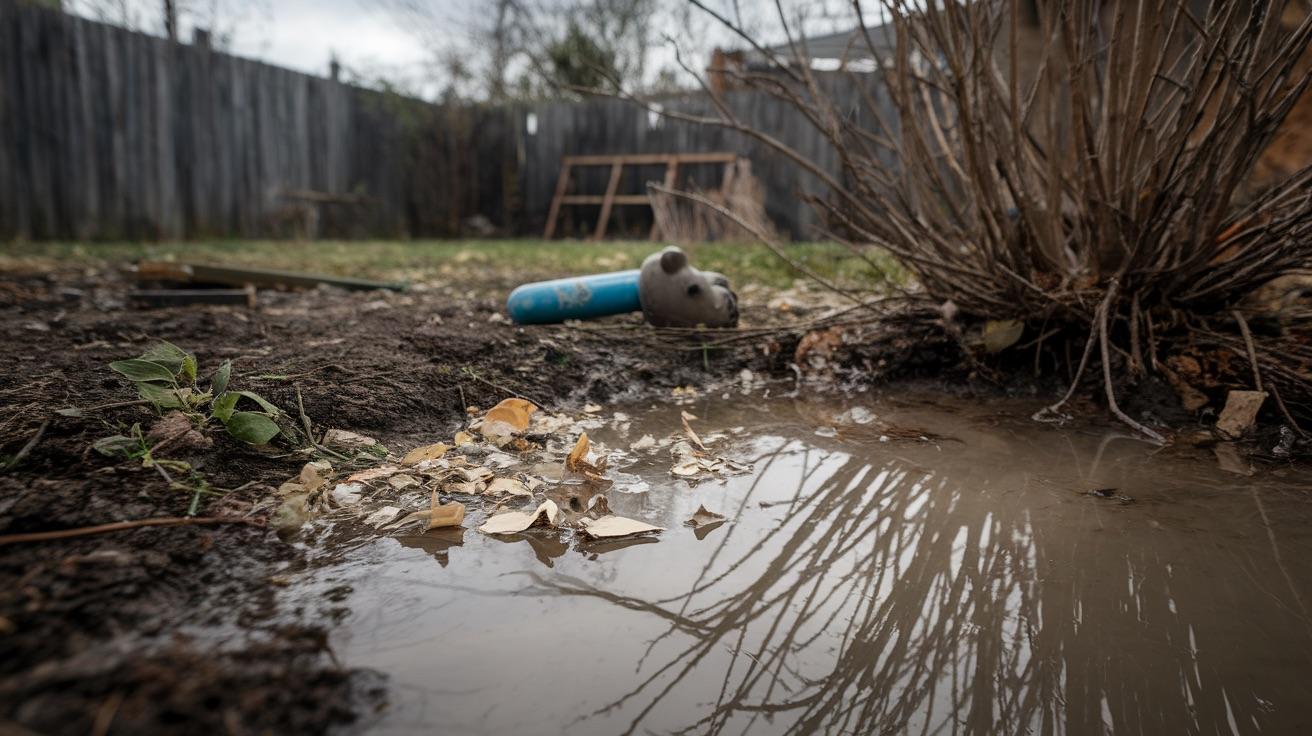
Using interior paint outside creates risks for people, animals, and the environment.
- Toxic Runoff: Failed interior paint washes into soil and water systems. This contamination can harm plants and groundwater.
- VOC (Volatile Organic Compounds) Emissions: Interior paint releases harmful chemicals when it breaks down outside. These vapors can affect breathing and health.
- Mold Health Risks: Mildew growth from failed paint creates health problems. Children, pets, and stray animals are especially vulnerable to mold exposure.
- Soil Contamination: Paint chips and flakes contaminate the soil around your home. This affects plants and can enter the food chain.
- Water System Damage: Paint runoff can contaminate wells and water supplies. This creates long-term environmental problems.
- Wildlife Impact: Animals can be harmed by eating paint chips or drinking contaminated water.
These risks extend far beyond your property and impact the whole community.
How to Identify If a Paint Is for Exterior Use?

Reading paint labels correctly helps you choose the right product for outdoor projects.
- Look for usage labels: Check if the can or data sheet clearly states “Exterior” or “Outdoor Use.”
- Weather resistance: Verify claims like “All-Weather” or “Weatherproof” for reliable performance in harsh conditions.
- UV protection: Choose paints labeled as “UV-Stable,” “Fade-Resistant,” or “Sun-Blocking” to resist sunlight damage.
- Mildew resistance: Look for terms such as “Mildew-Resistant,” “Anti-Fungal,” or “Moisture-Resistant” to prevent mold in humid environments.
- Temperature Tolerance: Confirm the minimum and maximum application temperatures, as well as the tolerance range of the dried paint.
- Certification marks: Identify seals or approvals from paint industry organizations to ensure quality and outdoor suitability.
Always keep your paint can label or take a photo; this helps identify your paint type if issues arise later.
Expert Tips for Transitioning from Interior to Exterior Paint

Professional painters recommend specific steps when switching from interior to exterior paint.
- Surface Preparation: Clean all surfaces thoroughly before applying exterior paint. Remove dirt, mildew, and loose paint completely.
- Proper Priming: Use exterior primer designed for your surface type. Prime all bare wood, metal, or concrete before painting.
- Weather Timing: Apply exterior paint during mild, dry weather. Avoid painting in direct sunlight or extreme temperatures.
- Multiple Coats: Apply at least two coats of exterior paint. This provides better protection and longer-lasting results.
- Quality Tools: Use high-quality brushes and rollers designed for exterior paint. These tools help achieve better coverage and finish.
- Drying Time: Allow proper drying time between coats. Rushing the process leads to poor adhesion and early failure.
Following these professional tips ensures your exterior paint job lasts for years.
What to Do If You Have Used the Interior Paint for the Outside?

If you’ve accidentally used interior paint outside, follow these steps quickly to prevent lasting damage:
- Inspect the surface carefully for peeling, cracking, or mildew growth.
- Take photos to document the damage and track any changes over time.
- Remove all failed paint by scraping and sanding to ensure proper adhesion of new layers.
- Clean the surface thoroughly using the right cleaner for your material, then let it dry completely.
- Apply exterior primer to all bare areas, selecting a formula suited for your specific surface type.
- Paint with high-quality exterior paint, applying at least two coats as per the manufacturer’s instructions.
- Monitor the area for several months, watching for any new signs of failure and addressing them quickly.
With proper prep and quality materials, you can reverse early damage and protect your exterior surfaces long-term.
Final Notes
While using interior paint outside might seem like a money-saving idea, it creates expensive problems.
Interior paint cannot withstand outdoor conditions, regardless of how well you prepare the surface.
The consequences of using the wrong paint extend beyond appearance.
Failed paint damages surfaces, creates health risks, and harms the environment.
These problems cost much more than buying the correct paint initially.
Smart homeowners invest in proper exterior paint for outdoor projects.
This choice saves money, protects property value, and ensures long-lasting results.
Be a smart homeowner; don’t focus on the initial cost, but always consider the long-term costs.
For more expert advice on home exteriors, feel free to click here and explore other guides that you might enjoy.
Frequently Asked Questions (FAQs)
If you’re still unsure about the correct type of paint, these quick answers can help clarify common concerns related to interior and exterior paint use.
Can I Use Exterior Paint Indoors Instead?
No, exterior paint contains higher VOCs that can release harmful fumes in enclosed indoor spaces.
Is There a Universal Paint for Both Interior and Exterior?
Some paints are labeled for dual use, but they’re only suitable for limited or low-impact areas like small porches.
How Soon Will Interior Paint Start Failing Outside?
Interior paint typically begins to peel, fade, or crack within a few weeks to a few months outdoors.
Will Primer Help Interior Paint Last Longer Outside?
No, while primer improves adhesion, it doesn’t provide the weather or UV protection that interior paint lacks.
Can I Seal Interior Paint with Polyurethane to Protect It Outdoors?
No, sealants cannot prevent fading, cracking, or moisture damage caused by outdoor conditions.

